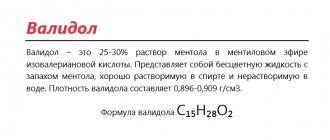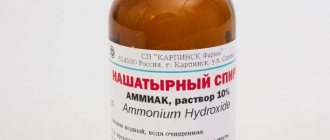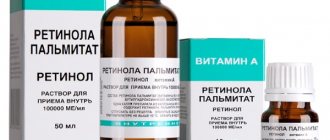Some are afraid of them, others cannot imagine life without them. All this is about glucocorticosteroids. Glucocorticosteroids (GCS) are steroid hormones that are produced in the adrenal cortex.
The production and level of these hormones is controlled by a system that includes brain structures: the hypothalamus, pituitary gland and the adrenal glands themselves. The main one is the hypothalamus, it is sensitive to the amount of hydrocortisone in the blood plasma and stress. If the level of hydrocortisone in the blood is low or stress occurs (stress, injury, infection), the hypothalamus produces a special substance that activates the pituitary gland. The pituitary gland, in turn, releases adrenocorticotropic hormone into the blood. It already acts on the adrenal glands and stimulates them to produce glucocorticosteroid hormones. When the level of these substances in the blood rises to the desired concentration, the hypothalamus stops stimulating this chain. Also, the work of the pituitary gland and adrenal glands can be stimulated by pro-inflammatory cytokines. The presence of a large number of GCS inhibits their production. This is how, in a simplified form, the interaction and regulation of the synthesis of glucocorticosteroids in the body occurs. The adrenal glands actively produce hormones in the morning from 6-8 hours, and in the evening and at night their activity is minimal.
At the cellular level, glucocorticosteroids enter the cell and increase the rate of production of proteins with anti-inflammatory effects. The effect does not appear immediately, but after several hours, since the synthesis of these substances takes time.
General information about GCS. What is this in medicine?
Our body synthesizes steroid hormones such as glucocorticoids. They are produced by the adrenal cortex, and their use is mainly associated with the treatment of adrenal insufficiency. Nowadays, not only natural glucocorticoids are used, but also their synthetic analogues - GCS. What is this in medicine? For humanity, these analogues mean a lot, as they have an anti-inflammatory, immunosuppressive, anti-shock, and anti-allergic effect on the body.
Glucocorticoids began to be used as medicines (hereinafter in the article - drugs) back in the 40s of the twentieth century. By the end of the 30s of the twentieth century, scientists discovered steroid hormonal compounds in the human adrenal cortex, and already in 1937 the mineralocorticoid deoxycorticosterone was isolated. In the early 40s, the glucocorticoids hydrocortisone and cortisone were also introduced. The pharmacological effects of cortisone and hydrocortisone were so varied that it was decided to use them as drugs. After some time, scientists synthesized them.
The most active glucocorticoid in the human body is cortisol (an analogue is hydrocortisone, the price of which is 100-150 rubles), and it is considered the main one. Less active ones can also be distinguished: corticosterone, cortisone, 11-deoxycortisol, 11-dehydrocorticosterone.
Of all the natural glucocorticoids, only hydrocortisone and cortisone have found use as drugs. However, the latter causes side effects more often than any other hormone, which is why its use in medicine is currently limited. Today, only hydrocortisone or its esters (hydrocortisone hemisuccinate and hydrocortisone acetate) are used among glucocorticoids.
As for glucocorticosteroids (synthetic glucocorticoids), a number of such drugs have been synthesized in our time, among which we can distinguish fluorinated (flumethasone, triamcinolone, betamethasone, dexamethasone, etc.) and non-fluorinated (methylprednisolone, prednisolone, prednisone) glucocorticoids.
Such agents are more active than their natural counterparts, and treatment requires smaller doses.
Topical corticosteroids in dermatological practice
Glucocorticosteroids
(GCS) have been one of the most widely used drugs in various fields of medicine for many decades. This is due to the variety of mechanisms of action and clinical effects of this group of drugs.
However, along with the beneficial therapeutic effect, which in many cases allows saving the patient’s life, glucocorticosteroids are characterized by severe side effects
, associated with their influence on all types of metabolism - protein, carbohydrate, fat and water-electrolyte. Often these side effects sharply limit the use of systemic drugs.
Therefore, the development of dosage forms of glucocorticosteroids for topical use
, having low bioavailability, selectivity of action in relation to certain organs and tissues, and also characterized by a much lower risk of developing systemic side effects, can be considered as a revolution in a number of areas of medicine, in particular dermatology.
Since the 1950s. topical corticosteroids
(TCS) have taken an important place in dermatological practice, becoming one of the main groups of drugs used in patients with skin diseases.
And this is no coincidence, since topical corticosteroids have a number of pharmacological effects that are useful
for this category of patients:
- anti-inflammatory,
- antiexudative,
- antiallergic,
- immunosuppressive,
- vasoconstrictor
- antipruritic
- and desensitizing.
Mechanism of action
of these drugs is very complex. Corticosteroids, penetrating into the nuclei of epidermal cells, increase the synthesis of lipocortins, which inhibit the activity of phospholipase A2, which leads to a decrease in the synthesis of inflammatory mediators (prostaglandins and leukotrienes) from phospholipids (arachidanates). At the same time, the synthesis of mucopolysaccharides (glucosaminoglycans), collagen and elastin decreases. The number of antigen-presenting and mast cells decreases. The activity of hyaluronidase and lysosomal enzymes decreases, which leads to a decrease in the permeability of the vascular wall and a decrease in edema. As a result of histaminase activation, the level of histamine in the inflammation site decreases. The antihistamine effect of these drugs is also associated with a decrease in the sensitivity of nerve endings to histamine. In addition, the migration of neutrophils, monocytes and eosinophils to the inflammation zone slows down. Local corticosteroids also have an immunosuppressive effect due to inhibition of DNA synthesis in keratinocytes and fibroblasts of the dermis.
All of the above positive qualities of local corticosteroids determine their widespread use in dermatological practice
for a variety of diseases, which include acute inflammatory dermatoses, characterized by chronic inflammation of the skin, itchy and proliferative dermatoses.
The effectiveness and tolerability of local therapy depend not only on the choice of drug, but also on its dosage form. Currently, there are several dozen glucocorticosteroid preparations for external use
, produced in various dosage forms, which allows for a rational choice for different forms of dermatoses, taking into account the stage of the disease and the individual characteristics of the patient.
In the acute stage
accompanied by acute inflammation and weeping,
lotions, aerosols and gels
. They reduce swelling, exudation, weeping, and relieve the burning sensation of the skin. Lotions have a cooling effect; their advantages over ointments or creams primarily appear in the treatment of lesions on the scalp. Gels contain a large amount of water and are especially indicated for application to the face and scalp.
In a calmer stage
creams
are used for inflammatory reactions . They are well absorbed from the surface of the skin, have cosmetic advantages over ointments, differing from the latter in being less fatty. Creams can be applied to damp and wet surfaces.
For the treatment of chronic lesions
, characterized by lichenification, pronounced infiltration and a hyperkeratotic reaction,
ointments
that penetrate more deeply into the skin and, therefore, have a more pronounced absorbable effect. Compared to creams, they also create a more pronounced occlusive effect. The average doses of glucocorticosteroids recommended for application to various parts of the body in the British National Formulary are presented in the table.
Table. Average doses of corticosteroids
| Ointments and creams, g* | |
| Face and neck | 15-30 |
| Both hands | 15-30 |
| Scalp | 15-30 |
| Both hands | 30-60 |
| Both legs | 30-60 |
| body frame | 100 |
| Scrotum and genitals | 15-30 |
Note: *for adult patients when used 2 times a day for 1 week
.
The arsenal of topical corticosteroids is constantly expanding. In the development of new drugs for many years, the main goal has been to increase specific, primarily anti-inflammatory, activity and, consequently, therapeutic efficacy. Esterified and topical corticosteroids appeared, the anti-inflammatory activity of which was several orders of magnitude higher than that of natural hydrocortisone. However, with the increase in the activity of these drugs, the frequency and severity of their undesirable side effects increased, especially with long-term use, so the developers of the newest fourth-generation drugs set themselves the task of increasing safety while maintaining comparable activity with third-generation drugs - halogenated corticosteroids.
Despite the fact that topical corticosteroids are significantly safer than systemic corticosteroids, they can also cause numerous side effects. The frequency and severity of these effects are associated with the strength of the anti-inflammatory effect. Glucocorticoids with weak and moderate activity cause side effects much less often
than more powerful drugs.
Highly potent topical corticosteroids should be used under close monitoring, as when absorbed from large areas of the skin they can cause depression of the hypothalamic-pituitary-adrenal axis and Cushing's syndrome. The incidence of these side effects depends on the location of the lesions and the duration of treatment. Maximum absorption of topical corticosteroids
is observed in areas with thin skin, wet and chafed surfaces.
To local side effects
Topical corticosteroids include, first of all, atrophy of the epidermis and dermis, erythema and telangiectasia, striae (skin stretch lines), purpuric rashes, hypertrichosis, acne.
Their development is due to inhibition of fibroblast proliferation and collagen synthesis, as well as suppression of the proliferative activity of keratinocytes and fibroblasts under the influence of corticosteroids. Thinning of the skin (especially on the face and flexor surfaces of the hands) may recover some time after stopping treatment, but the structure of the skin is not always restored. Atrophic striae and telangiectasia are, as a rule, irreversible
.
Systemic complications
topical corticosteroids, in addition to the above-mentioned Cushing's syndrome and hypocortisolism, are manifested by steroid diabetes, arterial hypertension, cataracts, glaucoma, pyoderma, mycotic infection. The development of systemic complications is associated with the entry of corticosteroids into the bloodstream, where they bind to the protein transcortin. The concentration of the free (active) fraction of drugs with a high degree of binding to transcortin is lower compared to drugs with a low degree of binding, so their side effects are usually less pronounced. In addition, the severity of side effects depends on the rate of metabolism of the drug. As your metabolic rate decreases, the risk of side effects increases.
Thus, when choosing a specific drug, you should focus not only on its effectiveness, but also on tolerability. It is also necessary to select a dosage form that is adequate to the degree of inflammation (wetting, acute or chronic inflammation). For moist, weeping lesions, water-based creams are usually used. In case of dry, lichen-like, scaly lesions or if occlusion is necessary, ointments are preferred.
According to the European classification, depending on their pharmacotherapeutic activity, all topical corticosteroids are divided into
into 4 groups:
- weak (hydrocortisone acetate);
- medium strength (prednisolone, prednicarbate, fluocortolone, alklometasone dipropionate);
- strong (betamethasone valerate, betamethasone dipropionate, budesonide, mometasone fuorate, hydrocortisone butyrate, dexamethasone, triamcinalone acetonide, methylprednisolone acetonate, flumethasone pivalate, flucinolone acetonide, fluticasone propionate);
- very strong (clobetasol propionate, chalcinonide).
Unfortunately, the most active drugs are potentially the most dangerous in terms of complications. The use of halogenated topical agents in pediatric practice is especially undesirable.
.
Halogen-containing glucocorticoids - alklometasone (contains chlorine), clobetasol (contains fluoride), triamcinolone (contains fluoride), fluticasone (contains fluoride), flumetasone (contains fluoride), fluocinolone acetonide (contains fluoride), betamethasone (contains fluorine), mometasone (contains chlorine ) - should not be used for a long time. They should be prescribed to relieve acute inflammation or to treat “old” infiltrates, when therapy with less strong corticosteroids does not have an effect; after reducing the inflammatory reaction, it is advisable to switch to indifferent drugs. Throughout the course of treatment, it is necessary to use potent non-halogenated corticosteroids
(for example, hydrocortisone butyrate) or halogen-free corticosteroid ointments, such as hydrocortisone, methylprednisolone, prednicarbate, mazipredone.
Applications of highly potent topical corticosteroids to the face
should .
For applications on the skin of the face and flexor surfaces of the limbs
Glucocorticoids with weak activity are recommended, for example hydrocortisone acetate at a concentration of no higher than 1% for a period of no more than 4 weeks.
Currently on the Russian and Belarusian pharmaceutical market, along with hydrocortisone acetate
, there is a drug called
hydrocortisone butyrate
(laticort).
Hydrocortisone butyrate is a non-halogenated fourth generation topical corticosteroid.
, which most successfully combine the positive properties of representatives of previous generations. The effectiveness of hydrocortisone butyrate is close to that of fluorinated glucocorticoids, and in terms of a favorable safety profile it is comparable to hydrocortisone acetate. The affinity for corticosteroid skin receptors of hydrocortisone butyrate is significantly superior to that of hydrocortisone acetate. Therefore, in terms of the strength of hydrocortisone, butyrate belongs to the strong group. At the same time, the pharmacokinetics of the drug, namely rapid metabolism and elimination from the body, minimize the risk of adverse reactions.
The drug is available in three dosage forms: lotion, cream, ointment
, - which allows its use in various phases of the inflammatory process (acute, subacute, chronic). Laticort can be used for various localizations of the inflammatory reaction: face, neck, scalp, torso, limbs. The method of using laticort is also convenient for the patient, when after a week of use in the form of applications 2-3 times a day, it is subsequently used in the form of single daily applications until the inflammatory reaction is completely resolved.
Laticort inhibits hypersensitivity reactions, proliferative and exudative processes occurring in connective tissue in areas of inflammation, reduces hyperemia, and reduces skin temperature. It is successfully used for the treatment of contact, allergic, seborrheic, atopic dermatitis, psoriasis
(including when localizing rashes on the scalp), as well as other dermatoses.
High therapeutic efficacy and good tolerability of laticort were noted in both adult patients and children
.
Unlike halogenated drugs, it has relatively low systemic bioavailability, so it can be applied to large areas of inflamed skin. The likelihood of developing systemic adverse reactions when using it is very low. However, it should be remembered that the area of application of the drug should not exceed 20% of the surface of the skin
. When using laticort, the risk of local side effects is also minimal, including when applied to sensitive areas of the skin (face, neck, chest).
In a Russian study that included 96 patients aged 14 to 78 years with various steroid-sensitive dermatoses, complex therapy using laticort achieved clinical remission or significant improvement in the majority of patients. No adverse reactions were observed in any of the observed patients, including when using the drug on the skin of the face. The best results were obtained in patients with allergic dermatitis and eczema.
The results of the studies allow us to come to the conclusion that the use of laticort in patients with allergic dermatoses and atopic dermatitis allows one to obtain a more pronounced clinical effect and reduce the treatment time by approximately 3-5 days compared to classical forms of local therapy (lotions, powders, shaken suspensions, pastes and ointments). Laticort, in terms of the severity of its therapeutic effect, is significantly superior not only to drugs such as hydrocortisone acetate and prednisolone for external use, but also to flumethasone.
Moreover, laticort also had advantages over highly active fluoride-containing topical corticosteroids
. Due to the risk of adverse reactions, the latter were usually applied to limited areas of the affected skin, therefore, when they were used, a stable resolution of all initially existing pathological elements often occurred at a later date than in patients receiving local laticort therapy. It is also necessary to emphasize that fluoride-containing corticosteroids were not used when localizing lesions in “problem” areas of the skin: the face, genital area and large folds. The researchers concluded that laticort significantly expands the treatment options for allergic dermatoses and atopic dermatitis and, due to its favorable efficacy/safety ratio, can be considered as a drug of choice for these diseases.
The advantages of modern topical corticosteroids include their good compatibility with antimicrobial, antibacterial and antimycotic drugs
. This expands the indications for the use of topical corticosteroids in dermatological practice and allows their use in various dermatoses complicated by pyococcal or mycotic infections. Below we list the most widely used combination drugs.
Topical glucocorticoids in combination with antimicrobial agents
:
- betaderm (betamethasone + gentamicin),
- sinalar K (fluocinolone + clioquinol),
- dermosolone (prednisolone + clioquinol),
- lorinden C (flumethasone + clioquinol),
- belogent (betamethasone + gentamicin),
- hyoxysone (oxytetracycline + hydrocortisone),
- oxycort (oxytetracycline + hydrocortisone),
- sofradex (dexamethasone + framycetin),
- oxycyclosole (prednisolone + oxytetracycline),
- Polcortolone TS (triamcinolone + tetracycline).
Topical glucocorticoids in combination with antimycotics
:
- lotriderm (betamethasone + clotrimazole),
- travocort (diflucortolone + isoconazole),
- mycosolone (mazipredone + miconazole).
Topical glucocorticoids in combination with antimycotics and antimicrobial agents
:
- triderm (betamethasone + clotrimazole + gentamicin),
- pimafucort (hydrocortisone + natamycin + neomycin).
Thus, topical corticosteroids are powerful agents for the treatment of a wide variety of dermatoses. The introduction of local glucocorticoids into medical practice has expanded therapeutic possibilities and significantly increased the effectiveness of treatment. However, the use of topical corticosteroids should be strictly individualized. The choice of drugs and dosage forms should be made taking into account age, clinical form of dermatosis, area and degree of inflammatory reaction. The correct choice and rational use of topical corticosteroids can significantly increase the safety of therapy, reduce and even completely avoid side effects when using these powerful therapeutic agents.
Sukolin G. I., Plakhova K. I., Imaeva N. A., Sukolina O. G.
GU TsNIKVI Ministry of Health of the Russian Federation, Moscow. Published: Medical Panorama magazine No. 5, May 2006.
Main effects of GCS
The effects of glucocorticosteroids on the human body are numerous. These hormones have antitoxic, antishock, immunosuppressive, antiallergic, desensitizing and anti-inflammatory effects. Let's take a closer look at how GCS work.
- Anti-inflammatory effect of GCS. Caused by suppression of phospholipase A2 activity. When this enzyme is inhibited in the human body, the liberation (release) of arachidonic acid is suppressed and the formation of certain inflammatory mediators (such as prostaglandins, leukotrienes, troboxane, etc.) is inhibited. Moreover, taking glucocorticosteroids leads to a decrease in fluid exudation, vasoconstriction (narrowing) of capillaries, and improvement of microcirculation at the site of inflammation.
- Antiallergic effect of GCS. Occurs as a result of a decrease in the secretion and synthesis of allergy mediators, a decrease in circulating basophils, inhibition of the release of histamine from basophils and sensitized mast cells, a decrease in the number of B and T lymphocytes, a decrease in the sensitivity of cells to allergy mediators, changes in the body's immune response, as well as inhibition of antibody formation.
- Immunosuppressive activity of GCS. What is this in medicine? This means that the drugs inhibit immunogenesis and suppress the production of antibodies. Glucocorticosteroids inhibit the migration of bone marrow stem cells, suppress the activity of B and T lymphocytes, and inhibit the release of cytokines from macrophages and leukocytes.
- Antitoxic and antishock effect of GCS. This effect of hormones is due to an increase in blood pressure in humans, as well as activation of liver enzymes that are involved in the metabolism of xeno- and endobiotics.
- Mineralocorticoid activity. Glucocorticosteroids have the ability to retain sodium and water in the human body and stimulate the excretion of potassium. In this regard, synthetic substitutes are not as good as natural hormones, but they still have the same effect on the body.
Scope of application of ointments with GCS
They are used by doctors of absolutely all clinical specialties, since the ability of these drugs to effectively relieve inflammation, stop allergic reactions, and modulate the immune response has proven to be in demand in the treatment of many diseases. Various dosage forms of glucocorticoids have been developed, such as solutions for injections, tablets, ointments, creams, gels, solutions for external use, drops in the eyes, nose, ears, sprays, solutions for intracavitary/intra-articular use.
One of the popular dosage forms of these hormones is glucocorticosteroid ointments. They are used mainly to treat diseases of the skin, eyes, joints, and vein diseases.
Very effective as local therapy for:
- Atopic dermatitis.
- Chronic contact dermatitis of various origins.
- Acute allergic reactions to insect bites.
- Conjunctivitis resistant to other types of treatment.
- Osteoarthrosis and arthritis.
- In the acute period of varicose veins (with thrombophlebitis).
Pharmacokinetics
According to the duration of action, systemic glucocorticosteroids can be divided into:
- Short-acting glucocorticosteroids (for example, hydrocortisone, the price of which varies from 100 to 150 rubles).
- Glucocorticosteroids with an average duration of action (prednisolone (reviews of which are not very good), methylprednisolone).
- Long-acting glucocorticosteroids (triamcinolone acetonide, dexamethasone, betamethasone).
But glucocorticosteroids can be determined not only by the duration of action. They can also be classified according to the method of administration:
- oral;
- intranasal;
- inhaled glucocorticosteroids.
This classification, however, applies only to systemic glucocorticosteroids.
There are also some drugs in the form of ointments and creams (local corticosteroids). For example, "Afloderm". Reviews about such drugs are good.
Let's look at the types of systemic GCS separately.
Oral glucocorticosteroids are well absorbed from the gastrointestinal tract without causing problems. Actively binds to plasma proteins (transcortin, albumin). The maximum concentration of oral corticosteroids in the blood is achieved 1.5 hours after administration. They undergo biotransformation in the liver, kidneys (partially) and other tissues by conjugation with sulfate or glucuronide.
Approximately 70% of conjugated corticosteroids are excreted in the urine, another 20% will be excreted later in the feces, and the remainder in other biological fluids (for example, sweat). The half-life is from 2 to 4 hours.
You can make a small table with the pharmacokinetic parameters of oral corticosteroids.
| Glucocorticosteroids. Drugs (names) | Tissue half-life | Plasma half-life |
| Hydrocortisone | 8-12 hours | 0.5–1.5 hours |
| Cortisone | 8-12 hours | 0.7–2 hours |
| Prednisolone (reviews are not very good) | 18-36 hours | 2-4 hours |
| Methylprednisolone | 18-36 hours | 2-4 hours |
| Fludrocortisone | 18-36 hours | 3.5 hours |
| Dexamethasone | 36-54 hours | 5 o'clock |
Inhaled glucocorticosteroids in modern clinical practice are represented by triamcinolone acetonide, fluticasone propionate, mometasone furoate, budesonide and beclomethasone dipropionate.
Their pharmacokinetic parameters can also be presented in table form:
| Glucocorticosteroids. Drugs (names) | Local anti-inflammatory activity | Volume of distribution | Plasma half-life | Efficiency of passage through the liver |
| Beclomethasone dipropionate | 0.64 units | — | 0.5 hours | 70% |
| Budesonide | 1 unit | 4.3 l/kg | 1.7–3.4 hours | 90% |
| Triamcinolone acetonide | 0.27 units | 1.2 l/kg | 1.4–2 hours | 80-90% |
| Fluticasone propionate | 1 unit | 3.7 l/kg | 3.1 hours | 99% |
| Flunisolide | 0.34 units | 1.8 l/kg | 1.6 hours | — |
Intranasal glucocorticosteroids in modern medicine are represented by fluticasone propionate, flunisolide, triamcinolone acetonide, mometasone furoate, budesonide and beclomethasone dipropionate. Some of them are called the same as inhaled corticosteroids.
After using intranasal corticosteroids, part of the dose is absorbed in the intestine, and another part enters from the mucous membrane of the respiratory tract directly into the blood.
Glucocorticosteroids that enter the gastrointestinal tract are absorbed by approximately 1-8 percent and, during the first passage through the liver, are almost completely biotransformed to inactive metabolites.
Glucocorticosteroids that enter the blood are hydrolyzed to inactive substances. Here is a table with their pharmacokinetic parameters:
| Glucocorticosteroids. Drugs | Bioavailability upon entry into the blood, percentage | Bioavailability when absorbed from the gastrointestinal tract, in percent |
| Budesonide | 34 | 11 |
| Beclomethasone dipropionate | 44 | 20-25 |
| Mometasone furoate | <0,1 | <1 |
| Triamcinolone acetonide | No data | 10,6-23 |
| Fluticasone propionate | 0,5-2 | |
| Flunisolide | 40-50 | 21 |
There is no point in describing drugs such as Afloderm (reviews of which are increasingly appearing online). Each of them contains the main active ingredient, which, most likely, has already been mentioned above. These drugs are local glucocorticosteroids, and they are most often presented in the form of ointments or creams.
Classification of glucocorticoids
The duration of action of glucocorticosteroids was artificially measured by specialists, based on the ability of a single dose of a particular drug to inhibit adrenocorticotropic hormone, which is activated in almost all of the pathological conditions listed above. This classification divides steroid hormones of this type into the following types:
- Short-acting - suppress ACTH activity for a period of just over a day (Cortisol, Hydrocortisone, Cortisone, Prednisolone, Metipred);
- Medium duration - duration of approximately 2 days (Traimcinolone, Polcortolon);
- Long-acting drugs - the effect lasts longer than 48 hours (Batmethasone, Dexamethasone).
In addition, there is a classic classification of drugs according to the method of their administration into the patient’s body:
- Oral (tablets and capsules);
- nasal drops and sprays;
- inhalation forms of the drug (most often used by asthmatics);
- ointments and creams for external use.
Depending on the condition of the body and the type of pathology, either one or several forms of medications containing glucocorticosteroids may be prescribed.
Place of GCS in therapy (indications for use)
Each type of glucocorticosteroid has its own indications for use. So, oral glucocorticosteroids are used to treat:
- Crohn's disease;
- nonspecific ulcerative colitis;
- interstitial lung diseases;
- acute respiratory distress syndrome;
- severe pneumonia;
- chronic obstructive pulmonary disease in the acute phase;
- bronchial asthma;
- subacute thyroiditis;
- congenital dysfunction of the adrenal cortex (in this case, the person does not produce corticoids himself and is forced to take their synthetic analogues);
- acute adrenal insufficiency.
Glucocorticosteroids are also used in replacement therapy for primary and secondary adrenal insufficiency.
Intranasal glucocorticosteroids are used for:
- idiopathic rhinitis (vasomotor);
- non-allergic rhinitis with eosinophilia;
- nasal piliposis;
- year-round allergic rhinitis (persistent);
- seasonal allergic rhinitis (intermittent).
Inhaled corticosteroids are used in the treatment of chronic obstructive pulmonary disease and bronchial asthma.
Treatment methods
Various types of treatment methods using GCS have been developed:
- replacement – used if the adrenal glands cannot independently produce the amount of hormones required by the body;
- suppressive – for children with congenital abnormalities in the functioning of the adrenal cortex;
- pharmacodynamic (it includes intensive, limiting and long-term treatment) - in antiallergic and anti-inflammatory therapy.
In each case, certain doses of the drug taken and the frequency of their use are prescribed.
Thus, alternating therapy involves taking glucocorticoids once every two days, pulse therapy means the prompt administration of at least 1 g of medication for urgent assistance to the patient.
Contraindications
GCS should be treated with caution in the following clinical cases:
- lactation period;
- glaucoma;
- some diseases of the cornea, which are combined with pathologies of the epithelium;
- fungal or viral eye diseases;
- purulent infections;
- vaccination period;
- syphilis;
- active form of tuberculosis;
- herpetic infection;
- systemic mycoses;
- some mental illnesses with productive symptoms;
- severe renal failure;
- arterial hypertension;
- thromboembolism;
- peptic ulcer of the duodenum or stomach;
- diabetes;
- Itsenko-Cushing's disease.
Intranasal administration of GCS is strictly contraindicated in the following cases:
- history of frequent nosebleeds;
- hemorrhagic diathesis;
- hypersensitivity.
Commonly Prescribed Drugs
From the group of short-acting drugs, the following are often prescribed:
- ointment with glucocorticosteroids Hydrocortisone 1%, 10g – 28 rubles, eye ointment 0.5%, 5g – 56, Russia; Laticort 0.1%, 15g – 147 rubles, Poland; Lokoid 0.1%, 30g – 290 rub., Italy;
- suspension for injections Hydrocortisone-Richter, 5 ml bottle – 230 rubles, Hungary;
- emulsion Lokoid Crelo 0.1%, 30g – 315 rub., Italy;
- tablets Kortef 0.01, 100 pcs. – 415 rubles, Canada; Cortisone 0.025, 80 pcs. – 900, Russia;
- lyophilized powder for IV, IM Solu-Cortef 0.1, 100 mg – 94 rubles, Belgium.
The most popular are representatives of the group of glucocorticosteroids with an effect of medium duration:
- tablets Medrol 0.032, 20 pcs. – 660 rub., Italy; Metypred 0.004, 30 pcs. – 204, Finland; Prednisolone 0.05 100 pcs. – 70, Russia; Kenalog 0.004, 50 pcs. – 374, Slovenia; Polcortolon 0.004, 50 pcs. – 393, Poland;
- lyophilisate for IV, IM Solu-Medrol 1.0, 15.6 ml – 473 rubles, Belgium;
- solution for intravenous, intramuscular injections Prednisolone Bufus 0.03, 10 ampoules – 162 rubles, Russia; Medopred 0.03, 10 ampoules – 153, Cyprus; Prednisol 3%, 3 amp. – 33, India;
- ointment Prednisolone 0.5%, 15g – 33, Russia; Fluorocort 0.1%, 15g – 260, Hungary.
Have a long-term effect:
- Megadexan tablets 10 mg, 60 pcs. – 493, Russia; Dexamethasone 0.0005, 10 pcs. – 20, Ukraine;
- Celestoderm cream 0.1%, 30g – 330, Belgium; Beloderm 0.05%, 30g – 210, Croatia; Akriderm 0.05%, 30g – 166, Russia;
- suspension for injection 0.002, 1 amp. – 206, Belgium;
- Maxidex eye drops 0.1%, 5 ml – 310, Belgium; Oftan-Dexamethasone 0.001, 5 ml – 220, Finland; Dexamethasone 0.1%, 10 ml – 120, Romania;
- injection solution Dexamethasone 0.004, 10 amp. – 76, Russia; 25 amp. – 160, India; Dexamethasone-Vial 0.004, 25 amp. – 116, China.
Glucocorticosteroids: side effects
Side effects of GCS can be divided into local and systemic.
Local side effects
They are divided into effects from inhaled and intranasal GCS.
1. Local side effects from inhaled glucocorticosteroids:
- cough;
- dysphonia;
- candidiasis of the pharynx and oral cavity.
2. Local side effects from intranasal corticosteroids:
- perforation of the nasal septum;
- nosebleeds;
- burning and dryness of the mucous membrane of the pharynx and nose;
- sneezing;
- itching in the nose.
Systemic side effects
They are divided depending on the part of the body they act on.
1. From the central nervous system:
- psychoses;
- depression;
- euphoria;
- insomnia;
- increased nervous excitability.
2. From the cardiovascular system:
- thromboembolism;
- deep vein thrombosis;
- increased blood pressure;
- myocardial dystrophy.
3. From the reproductive system:
- hirsutism;
- delayed sexual development;
- sexual dysfunction;
- unstable menstrual cycle.
4. From the digestive system:
- fatty liver;
- pancreatitis;
- bleeding from the gastrointestinal tract;
- steroid ulcers of the intestines and stomach.
5. From the endocrine system:
- diabetes;
- Cushing's syndrome;
- obesity;
- atrophy of the adrenal cortex due to inhibition of its functions.
6. From the organs of vision:
- glaucoma;
- posterior subcapsular cataract.
7. From the musculoskeletal system:
- muscle wasting;
- myopathy;
- growth retardation in children;
- aseptic necrosis and bone fractures;
- osteoporosis.
8. From the skin:
- alopecia;
- striae;
- thinning of the skin.
9. Other side effects:
- exacerbation of chronic infectious and inflammatory processes;
- swelling;
- retention of water and sodium in the body.
Destination Features
The use of glucocorticoids is carried out only in extreme cases when drugs from other pharmacological groups are not effective. When prescribing steroid hormones, minimal dosages are used so as not to disrupt the function of the endocrine glands.
For children
Most steroid hormones are contraindicated for use in children of all age groups. Restrictions on the use of drugs in this category are due to the fact that they cause atrophy of the adrenal cortex and slow down physical and mental development. After discontinuation of glucocorticoids, the child may experience an acute deficiency of steroid hormones.
Medicines in this category are used only in cases of extreme necessity using the shortest possible therapeutic courses. Children undergoing treatment with steroid hormones should be closely monitored by medical personnel.
During pregnancy and pregnancy
Glucocorticoids are contraindicated in women who are pregnant or breastfeeding a newborn baby. Taking synthetic drugs in this category can have a negative impact on the formation of the infant’s endocrine system.
For allergies
Glucocorticoids suppress the severity of allergic reactions. Preparations based on steroid hormones are prescribed to eliminate dermatological symptoms, accompanied by itching of the skin surface, swelling of epithelial tissues and mucous membranes, their redness, and the appearance of a red or pink rash.
Mandatory
The first condition for successful treatment of allergies using glucocorticoids is the elimination of the pathological source of allergens.
For psoriasis
For psoriasis, glucocorticosteroids are prescribed to curb further progression of the disease with the formation of new psoriatic plaques. In this case, the therapeutic effect of the use of steroid hormones is achieved due to their immunosuppressive properties.
The constituent components of drugs in this category suppress the activity of cells of the immune system, the aggression of which is one of the most common causes of the development of psoriasis.
For asthma
Bronchial asthma is considered a severe form of an allergic reaction caused by external or internal irritants of the body. Steroid hormones inhibit sensitivity to accumulated allergens, reduce the severity of the immune response, and prevent the occurrence of another bronchial spasm.
For asthma, glucocorticoids are used in the form of steam inhalations or special aerosols, which are delivered directly to the surface of the bronchopulmonary tissue.
Precautionary measures
In some cases, glucocorticosteroids should be used with caution.
For example, in patients with liver cirrhosis, hypothyroidism, hypoalbuminemia, as well as in senile or elderly patients, the effect of GCS may be enhanced.
When using GCS during pregnancy, you need to take into account the expected effect of treatment for the mother and the risk of a negative effect of the drug on the fetus, since GCS can lead to impaired fetal growth and even defects such as cleft palate, etc.
If during the use of GCS the patient suffers an infectious disease (chicken pox, measles, etc.), it can be very severe.
When treating GCS in patients with autoimmune or inflammatory diseases (rheumatoid arthritis, intestinal diseases, systemic lupus erythematosus, etc.), cases of steroid resistance may occur.
Patients receiving oral glucocorticosteroids for a long time should periodically undergo a stool test for occult blood and undergo fibroesophagogastroduodenoscopy, since steroid ulcers may not be a concern during treatment with GCS.
30-50% of patients treated with glucocorticosteroids for a long time develop osteoporosis. As a rule, it affects the feet, hands, pelvic bones, ribs, and spine.
List of popular glucocorticosteroid drugs
Among the many medicines containing glucocorticosteroids, specialist doctors and pharmacologists identify several drugs of various groups that are highly effective and have a low risk of causing side effects:
- oral medications: Budenofalk, Dexamethasone, Prednisolone, Berlicort;
- injection ampoules: Budesonide, Dexamethasone, Plibecort;
- inhalation medications and solutions for inhalers: Budoster, Pulmicrot, Beclazone, Symbicort;
- sprays for nasal use: Nosephrine, Budoster, Nazarel, Tafen Nasal, Sintaris;
- medications for local use in the treatment of inflammatory eye diseases and gynecological pathological conditions: Dexoftan, Cortineff, Rektodelt;
- ointments and creams for external use: Akriderm, Lokoid, Sinaflan. In addition, there are a large number of ointments and gels that combine not only a hormonal component, but also an additional healing, soothing substance for the skin: Akriderm GK and SK, Rederm, Diprosalik, Flucort, Fluorocort, Apuoin, etc.
note
Depending on the patient’s condition and the stage of development of the disease, the form of the drug, dose and duration of use are selected. The use of glucocorticosteroids must be under the constant supervision of a physician to monitor any changes in the patient’s condition.
Interaction with other drugs
All glucocorticosteroids (classification does not matter here) give a certain effect when in contact with other drugs, and this effect is not always positive for our body. Here's what you need to know before using corticosteroids with other drugs:
- GCS and antacids - absorption of glucocorticosteroids decreases.
- GCS and barbiturates, diphenin, hexamidine, diphenhydramine, carbamazepine, rifampicin - the biotransformation of glucocorticosteroids in the liver increases.
- GCS and isoniazid, erythromycin - the biotransformation of glucocorticosteroids in the liver decreases.
- GCS and salicylates, butadione, barbiturates, digitoxin, penicillin, chloramphenicol - all of these drugs increase elimination.
- GCS and isoniazid are disorders of the human psyche.
- GCS and reserpine – the appearance of a depressive state.
- GCS and tricyclic antidepressants - intraocular pressure increases.
- GCS and adrenergic agonists - the effect of these drugs is enhanced.
- GCS and theophylline - the anti-inflammatory effect of glucocorticosteroids is enhanced, cardiotoxic effects develop.
- GCS and diuretics, amphotericin, mineralocorticoids - the risk of hypokalemia increases.
- GCS and indirect anticoagulants, fibrinolytics, butadine, ibuprofen, ethacrynic acid - hemorrhagic complications may follow.
- GCS and indomethacin, salicylates - this combination can lead to ulcerative damage to the digestive tract.
- GCS and paracetamol - the toxicity of this drug increases.
- GCS and azathioprine - increases the risk of cataracts and myopathies.
- GCS and mercaptopurine - the combination can lead to an increase in the concentration of uric acid in the blood.
- GCS and hingamine - the undesirable effects of this drug are enhanced (corneal opacification, myopathy, dermatitis).
- GCS and methandrostenolone - the undesirable effects of glucocorticosteroids are enhanced.
- GCS and iron supplements, androgens - increase the synthesis of erythropoietin, and against this background, an increase in erythropoiesis.
- GCS and sugar-lowering drugs – an almost complete decrease in their effectiveness.
How do glucocorticosteroids work?
The extensive and multifaceted effects exerted by glucocorticosteroids are due to the ability of the active substance molecule to penetrate the membrane into the cell and act on the genetic apparatus at the level of transcription and processing of ribonucleic acid. By binding to cytoplasmic receptors located inside target cells, they form an active complex that penetrates the cell nucleus and affects the synthesis of activator proteins, which are natural regulators of genes. By interacting with nuclear factors, glucocorticosteroids change the immune response, directly and indirectly reducing the formation of substances that contribute to the development of inflammation - prostaglandins, highly active lipid inflammatory mediators leukotrienes, membrane phospholipid mediators PAF (platelet aggregation factor). The full mechanism of influence has not yet been fully studied.
It takes from half an hour to several hours for genomic effects to develop. At higher doses, non-genomic or receptor-mediated effects are realized. The effect of glucocorticosteroids in this case manifests itself within 1-2 minutes after application. The ability to quickly, within a few seconds, influence the membranes of target cells, changing their physicochemical properties and reducing the process of release of allergic and inflammatory mediators, allows you to instantly alleviate the patient’s condition and save his life. The main effects of taking glucocorticosteroids are as follows:
- anti-inflammatory effect – inhibit inflammatory phenomena of any nature and stage of development, reduce the permeability of the cell membrane to inflammatory mediators, and the migration of immune cells to the site of inflammation;
- anti-shock, anti-stress - increase blood pressure, stimulate the production of a large number of blood cells, which allows you to fight a state of shock and quickly replenish blood loss;
- immunoregulatory effect - in low doses they slightly increase immunity, in high concentrations they suppress the functions of the immune system many times, which determines the use of glucocorticosteroids in transplantology for tissue and organ transplantation - bone marrow, kidneys, radiation therapy, chemotherapy of malignant neoplasms, during the treatment of autoimmune diseases ;
- affect metabolism - slow down the excretion of sodium, water, chlorine from the body, increase the leaching of potassium and calcium from the bones, suppress its absorption. They increase glucose levels, impair sugar processing, disrupt protein and lipid metabolism, redistributing subcutaneous fat tissue - increasing its volume on the face, neck, chest and decreasing it in the extremities. Promote muscle atrophy, the appearance of stretch marks on the skin, delayed scarring of wounds, hemorrhages, and the development of osteoporosis;
- anti-allergic effect – suppresses the clinical manifestations of allergies;
- pain relief – reduce the severity of pain, improve the functionality of joints;
- antipyretic, anti-edematous effect - eliminate fever, reduce or completely remove swelling, incl. mucous membranes;
- adaptogenic – increase the body’s resistance to the harmful effects of physical, chemical, biological factors;
- facilitate the work of the heart and blood vessels - reduce capillary permeability, tone, strengthen the walls of blood vessels, normalize the contractile function of the heart muscle;
- affect the endocrine system - reduce the production of sex hormones, suppress the connection between various parts of the brain and the adrenal glands, interact with other hormones, reduce the sensitivity of tissues to them;
- hemodynamic, hematological effect - greatly changes the blood picture, causes a deficiency of lymphocytes, leukocyte cells, stimulates the production of platelets and red blood cells.










